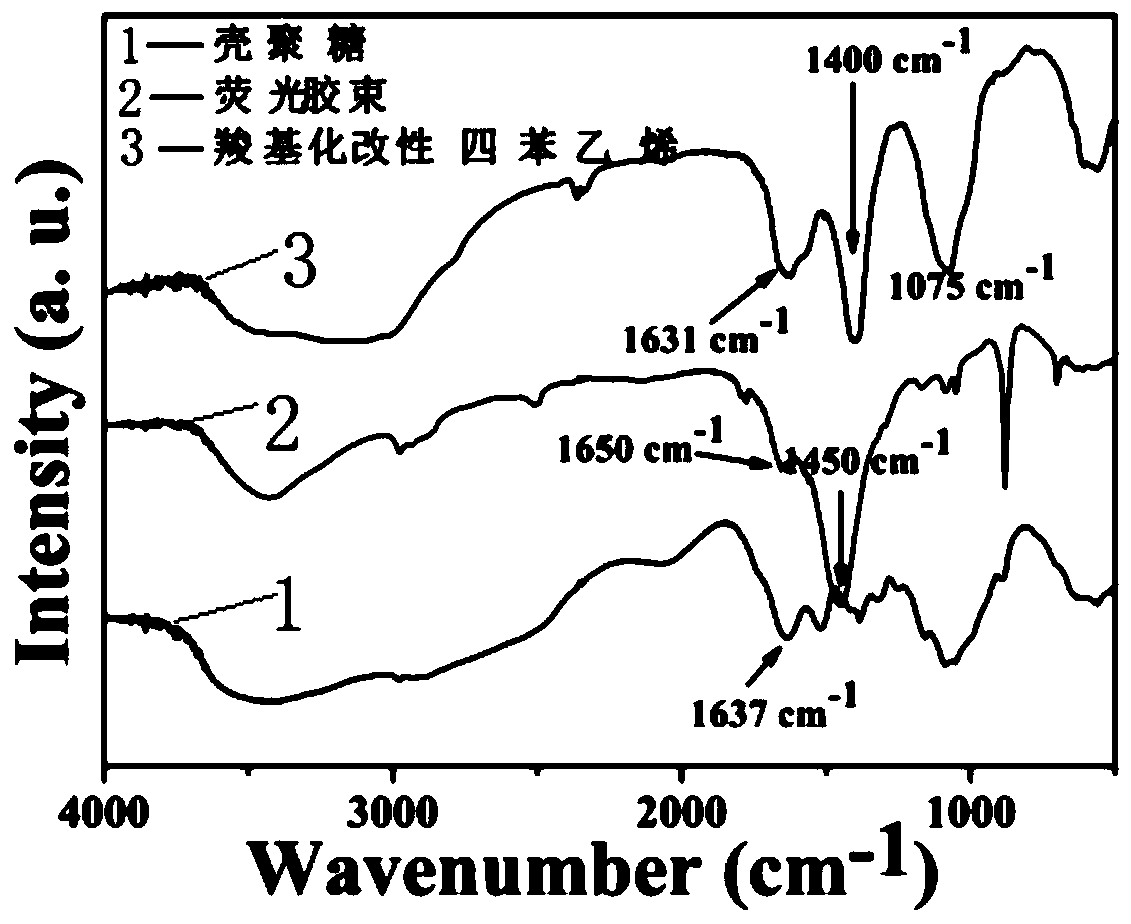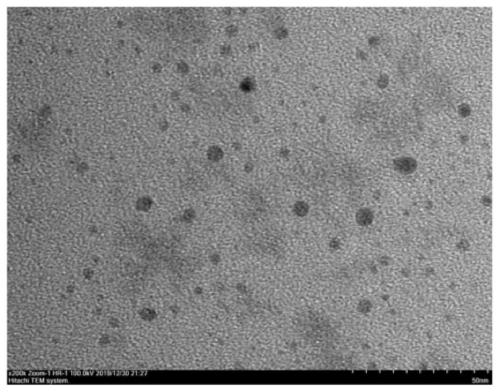PH-responsive chitosan fluorescent composite micelle, and preparation method and application thereof
A technology of composite micelle and chitosan, which is applied in the preparation of cyanide reaction, preparation of organic compounds, chemical instruments and methods, etc., can solve problems such as biological toxicity, and achieve the effect of simple and fast synthesis.
- Summary
- Abstract
- Description
- Claims
- Application Information
AI Technical Summary
Problems solved by technology
Method used
Image
Examples
Example Embodiment
[0035] Example 1
[0036] A preparation method of pH-responsive chitosan fluorescent composite micelles, comprising the following steps:
[0037] 1) Preparation of tetra[4-acetoxyaminophenyl]ethylene (TPE-4COOH)
[0038] Dissolve 1.0 g of tetra[4-aminophenyl]ethylene and 2.0 g of chloroacetic acid in 15 ml of toluene, add 3 ml of dry triethylamine with stirring, heat up to 85°C and reflux, react for 6 hours, cool to room temperature, and filter the mixture The obtained filter residue was dissolved with a small amount of saturated aqueous sodium bicarbonate solution and filtered with suction. The filtrate was precipitated in 60 ml of ether, the product was dissolved in dichloromethane and washed twice with ether, and dried in vacuo overnight to obtain pale yellow tetra[4] -Acetylaminophenyl]ethylene product in about 83.6% yield. figure 1 is the H NMR spectrum of tetrakis[4-acetoxyaminophenyl]ethylene, 1 H NMR (CDCl 3,δ): 6.82(d, 8H), 6.43(d, 8H), 4.7(s, 4H), 4.1(s, 8H), th...
PUM
 Login to View More
Login to View More Abstract
Description
Claims
Application Information
 Login to View More
Login to View More - Generate Ideas
- Intellectual Property
- Life Sciences
- Materials
- Tech Scout
- Unparalleled Data Quality
- Higher Quality Content
- 60% Fewer Hallucinations
Browse by: Latest US Patents, China's latest patents, Technical Efficacy Thesaurus, Application Domain, Technology Topic, Popular Technical Reports.
© 2025 PatSnap. All rights reserved.Legal|Privacy policy|Modern Slavery Act Transparency Statement|Sitemap|About US| Contact US: help@patsnap.com



